Best MIDI foot controllers 2025: seamless transitions for amps, pedals, rack effects, and more
Our favorite MIDI controllers for guitar cover all levels and budgets, with models from Gig Rig, Fender, Boss, Electro-Harmonix, and more

Previously only available to professional touring guitarists, adding one of the best MIDI foot controllers to your setup has become a much more realistic rig option in recent years. This is largely due to the increase in amp modelers used by the average guitarist and more pedals offering MIDI control as an option.
If you want to activate multiple pedals, change parameters, tweak amp settings, or even control other instruments with just the click of footswitch, then a MIDI foot controller will allow you to do that. As we're looking at guitars here, the majority of options in this guide are pedal switchers with MIDI compatability, although we have included some that can change other parameters like amp channels and settings, as well as interfacing with other MIDI-enabled instruments.
Our team is chock full of gigging guitarists, many of whom have used MIDI controllers in our rigs when playing live. If you're deliberating about whether or not to add MIDI to your setup, you can rely on our first-hand experience to guide you through. If you still find yourself questioning something, go have a look at our FAQs section which has loads of common questions answered.
The quick list
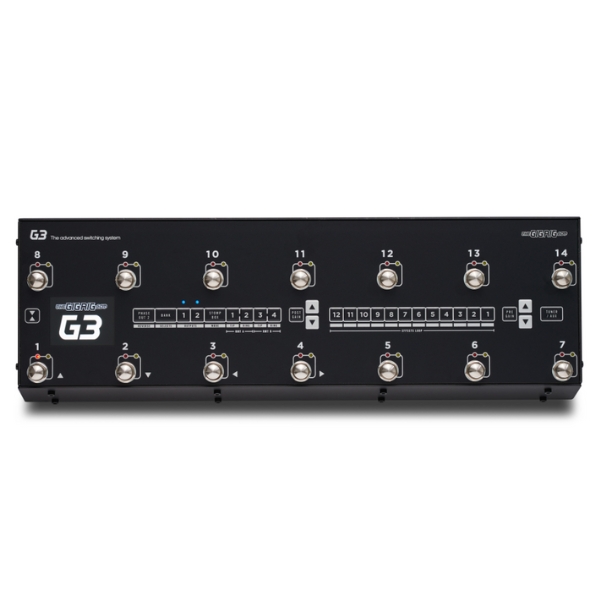
If you want the very best of the best, the Gig Rig G3 Switching System is the top choice for us. Providing easy hands-on programming it features 99 programming slots each with 28 presets, delivering excellent choice for those in multiple bands.
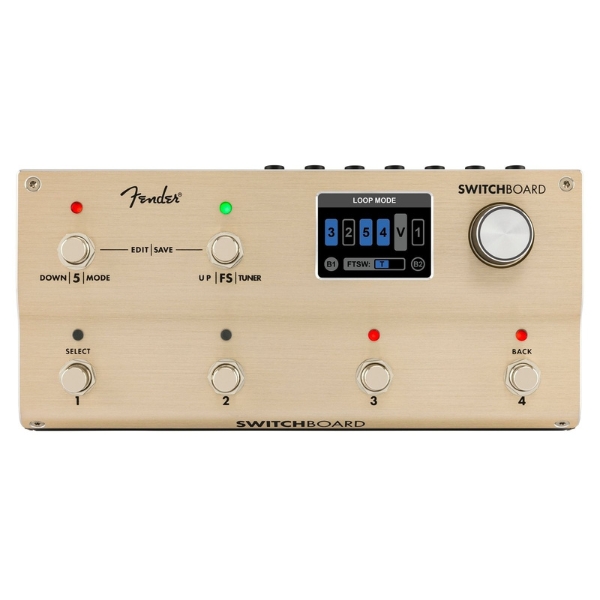
If you're getting into MIDI switching for the first time, the Fender Switchboard Effects Operator is a user-friendly option that's great for beginners. An LCD display makes it easy to coordinate your loops, and we think it looks great too.
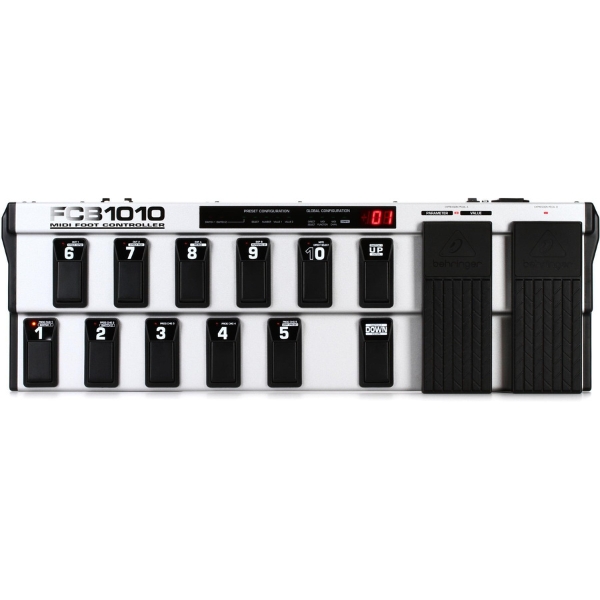
The only true budget MIDI foot controller out there, the Behringer FCB1010 has been famously used by Trivium in conjunction with their Kemper profilers. Low cost yet super flexible, it's a great option for those on a tight budget.
Best overall
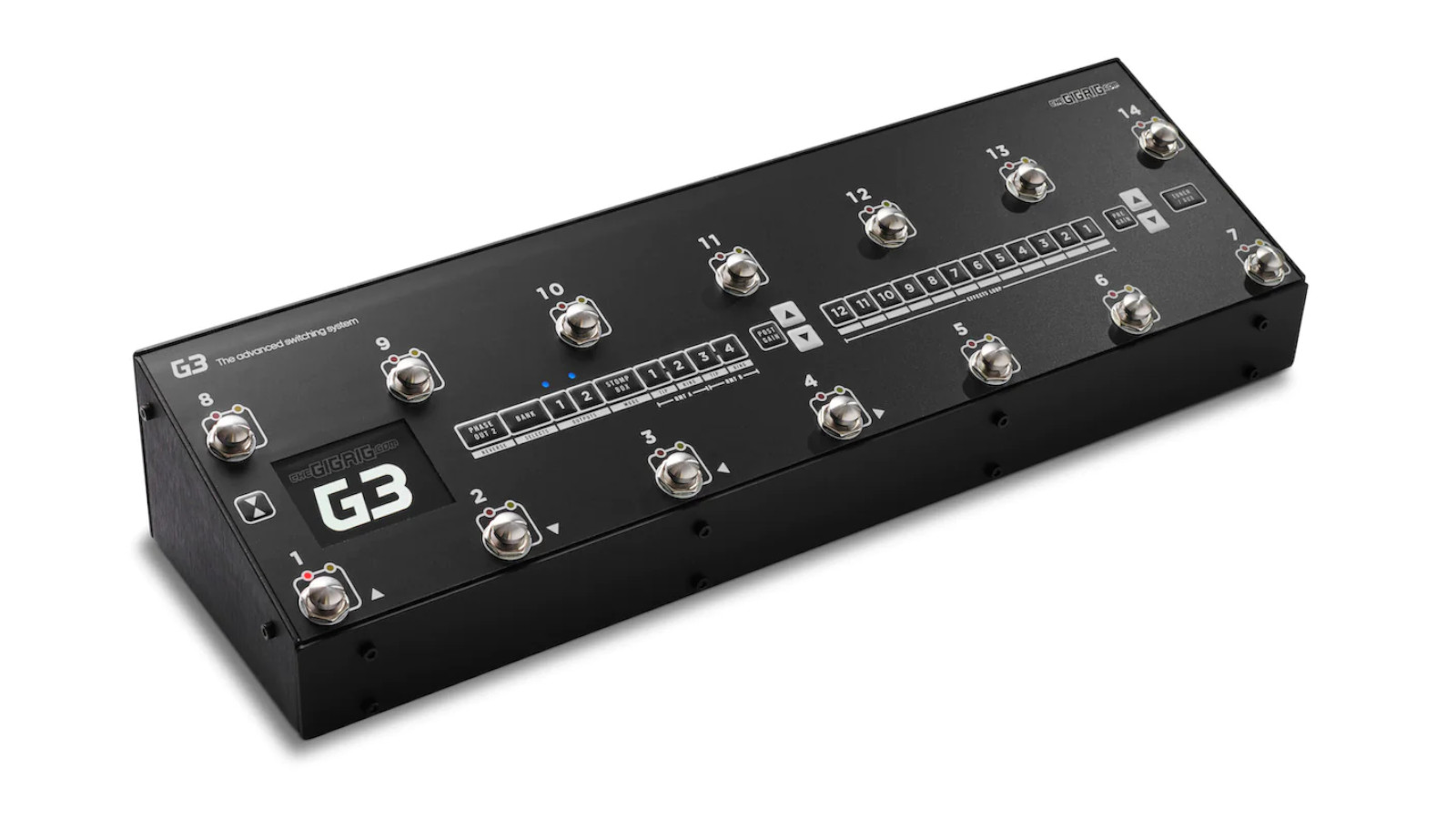
1. Gig Rig G3 Switching System
Our expert review:
Specifications
Reasons to buy
Reasons to avoid
In mid-2023, the Gig Rig controllers entered a new era with the introduction of the G3. This professional-grade MIDI solution side-steps computer-based programming. Providing a more hands-on relationship than the PBC/10, set-up time feels minimal as you plug in and play with full routing features available from its interface. The LCD display simplifies navigation, ensuring efficient programming with a kinesthetic touch.
This fully-featured pedalboard brain accommodates up to 12 effect loop slots, recallable in 99 memory banks, each containing up to 28 presets. The G3 multiplies pedalboard arrangement by recalling endless presets and MIDI-enabled pedal parameter changes.
The G3 provides app-based and web-based programming via Bluetooth, facilitating convenient on-the-fly editing of the switcher's routing for tweaks on the road and between live sets.
Best for beginners
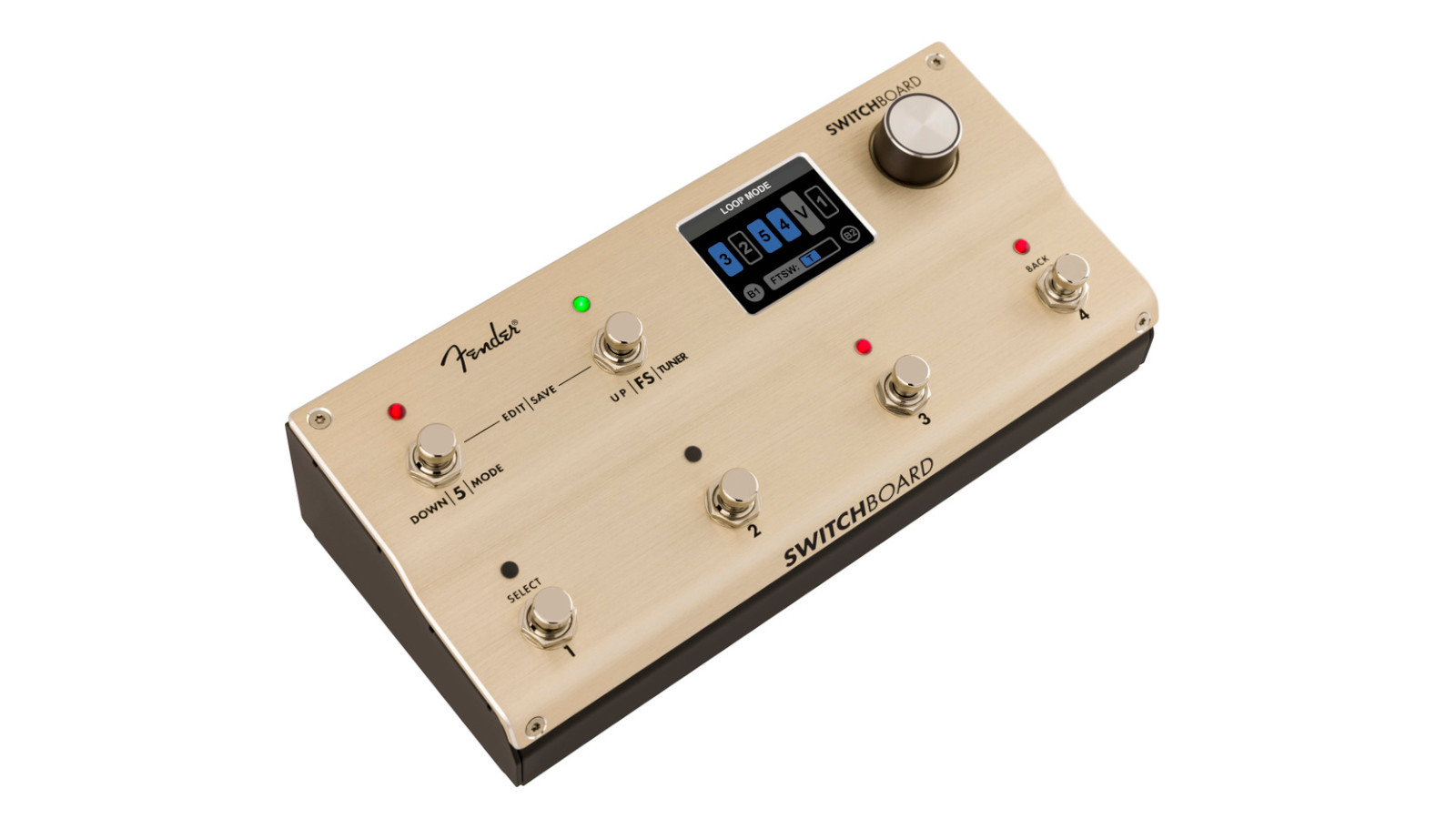
2. Fender Switchboard Effects Operator
Our expert review:
Specifications
Reasons to buy
Reasons to avoid
On the opposite end of the spectrum, there's the Fender Switchboard Effects Operator – a user-friendly switching solution packed with essential features to automate your board. Ideal for guitarists easing into MIDI switching without diving into complex programming.
Externally, Fender's faux-wooden design sets it apart in MIDI controller aesthetics. Internally, its LCD interface can color-coordinate effect loops with pedals, aiding in both programming and performance orientation. By tapping footswitches in any order, users can swiftly rearrange their pedalboard layout.
Offering four mono effect loop points and one stereo effect loop, it may have fewer pedal compatibilities compared with others, yet it brings a simplified approach to maximizing pedalboard potential.
Best budget
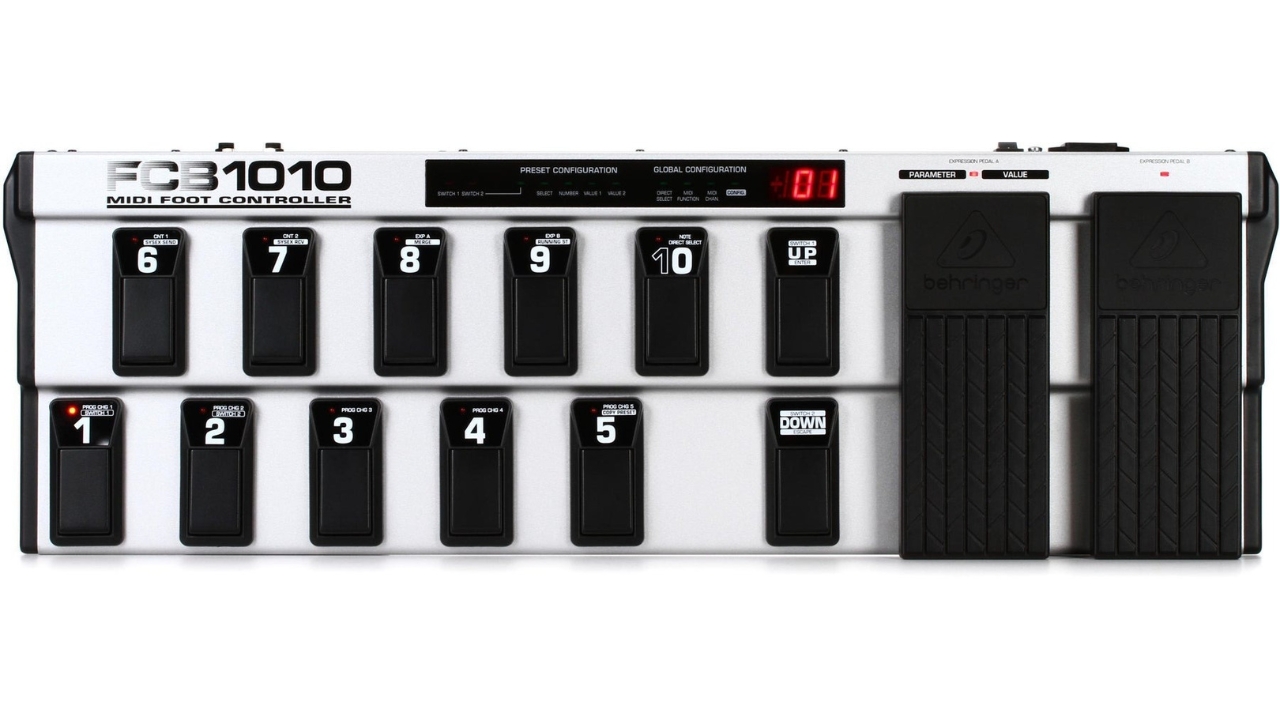
3. Behringer FCB1010
Our expert review:
Specifications
Reasons to buy
Reasons to avoid
More a true MIDI foot controller versus the majority pedal switchers with MIDI on this list, the Behringer FCB1010 is a great choice if you're on a budget, or you're using a rack mounted amp and effects modeler like a Kemper.
Famously utilized by Trivium, the FCB1010 packs plenty of flexibility when it comes to tweaking, allowing you to set 10 individual footswitches across 10 banks, which should be plenty for even the most complex rigs.
The dual expression pedals are a nice addition for guitarists too, allowing you to use multiple wah, volume, or expression settings without requiring further button presses. It's not the most durable MIDI foot controller we've ever come across, but at this price it's still an absolute steal.
Best compact
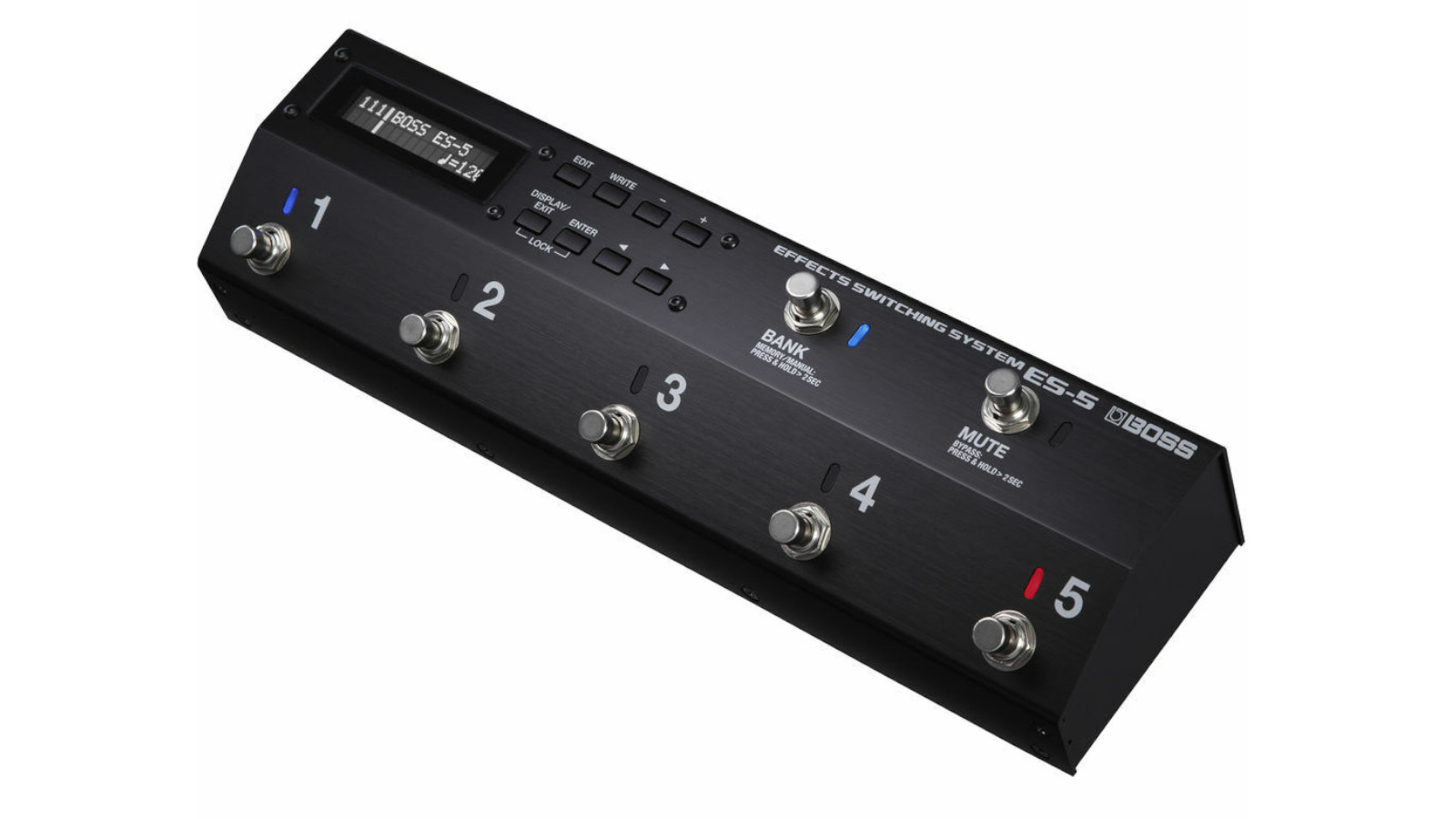
4. Boss ES-5
Our expert review:
Specifications
Reasons to buy
Reasons to avoid
The MIDI controllers that we have discussed so far take up a fair bit of pedalboard estate right? Fear not, The ES-5, Boss’s compact counterpart to the ES-8, retains similar functionality but caters to guitarists with smaller set-ups and simpler switching needs.
With five effect loops and flexible pedal routing per patch, it's ideal for small but versatile rigs. The ES-5 serves as an accessible entry point into MIDI programming, allowing guitarists to adjust digital MIDI-enabled spatial and modulation parameters throughout a set without diving too deep into intricate setlist and song section programming. Boss provides powerful software for the ES-5, facilitating detailed MIDI parameter control and programming just like its larger sibling.
Best pro option
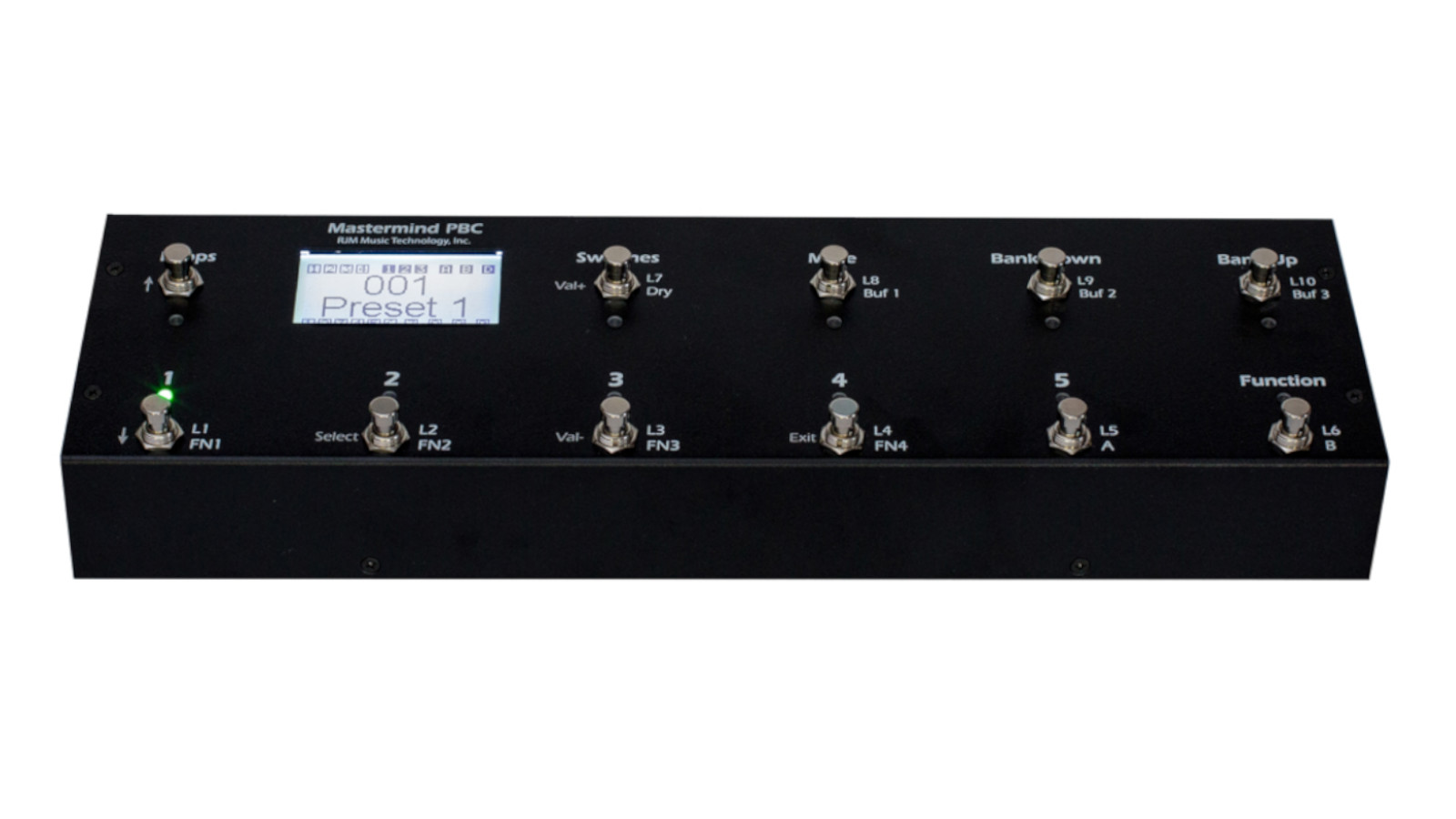
5. RJM Mastermind PBC/10
Our expert review:
Specifications
Reasons to buy
Reasons to avoid
Finding its way onto boards built by the likes of Mason Marangella of Vertex Effects and his guitar tone podcast co-host Brian Omillion, the RJM PBC/10 is the professional board-builder’s choice and the ultimate solution for effortlessly navigating repertoires.
The PBC/10 stores up to 1000 songs and can organize them into setlists. Each footswitch can transmit up to 20 MIDI messages across 16 MIDI devices, maximizing the tonal recall from MIDI-enabled pedals – power, unlimited power.
Offering a more technical approach than other MIDI controllers on this list, Mac and PC editing software provides in-depth control over every tiny detail. Though elusive in the marketplace, direct availability from RJM warrants consideration for achieving top-tier pedalboard results.
Best flexibility
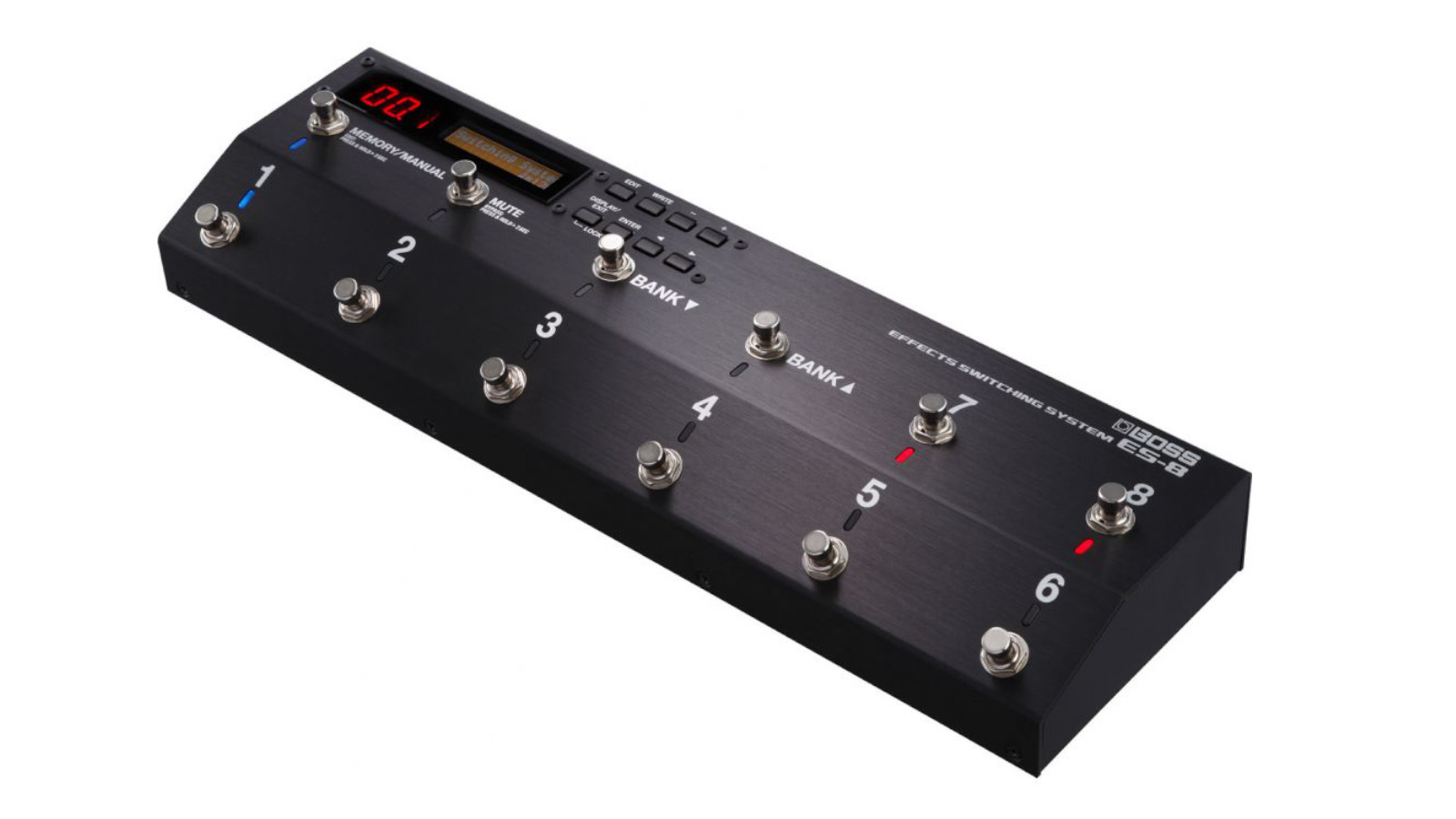
6. Boss ES-8
Our expert review:
Specifications
Reasons to buy
Reasons to avoid
Our old faithful pedal maker, Boss, has arrived on the MIDI control scene with the ES-8. This MIDI controller aims to provide user-friendly switching and all the functionality at an accessible price point.
Boss has designed a MIDI controller that can control up to eight effect loops with flexible arrangement options, parallel effect chains and MIDI parameter changes that will recall far-reaching tones on the fly.
Analog circuitry provides a warm and slightly colored signal path, with programmable buffers for volume consistency across patches. The digital display simplifies hands-on programming, while Boss's free ES-8 system software enables detailed MIDI parameter control and programming.
More options...
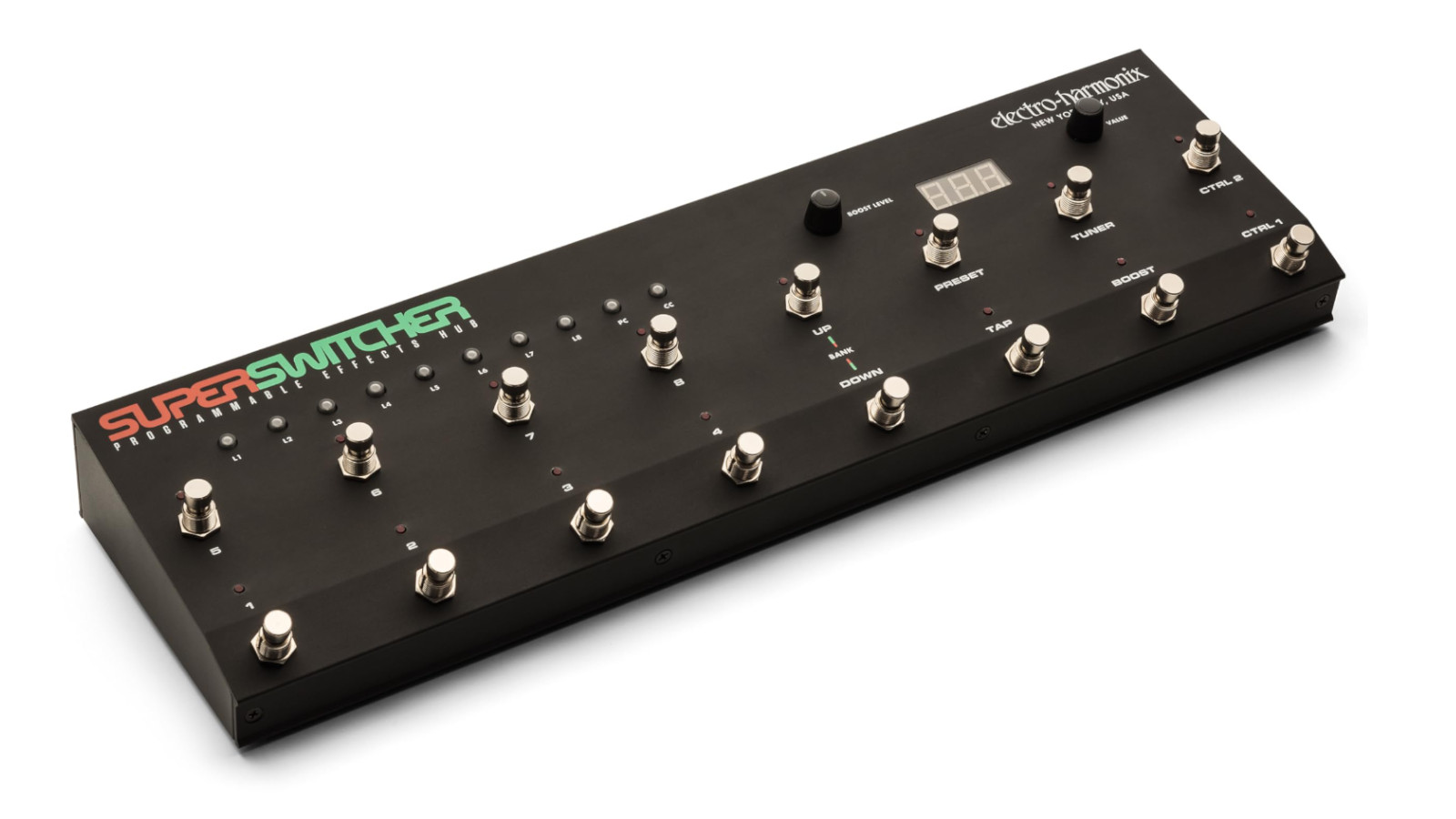
7. Electro-Harmonix Super Switcher
Our expert review:
Specifications
Reasons to buy
Reasons to avoid
As a pedal industry constant for decades, it is no surprise Electro-Harmonix’s Super Switcher delivers. Offering a fully-featured effects brain with simplified programming, it's ideal for streamlined pedalboard control.
Featuring six effect loops and a permanently engaged seventh insert loop for always-on pedals like light drives or volume pedals, EHX focuses on the simpler needs of guitarists while providing MIDI outputs for advanced digital parameter control. Using the eight buttons on the front, programming is easy and intuitive.
The Super Switcher offers two modes: Instant access for engagement of effect loops, and Preset mode for intricate MIDI parameter recall. The Super Switcher functions as both a simple tone switcher and an advanced MIDI-programmable preset creator. The choice is yours.
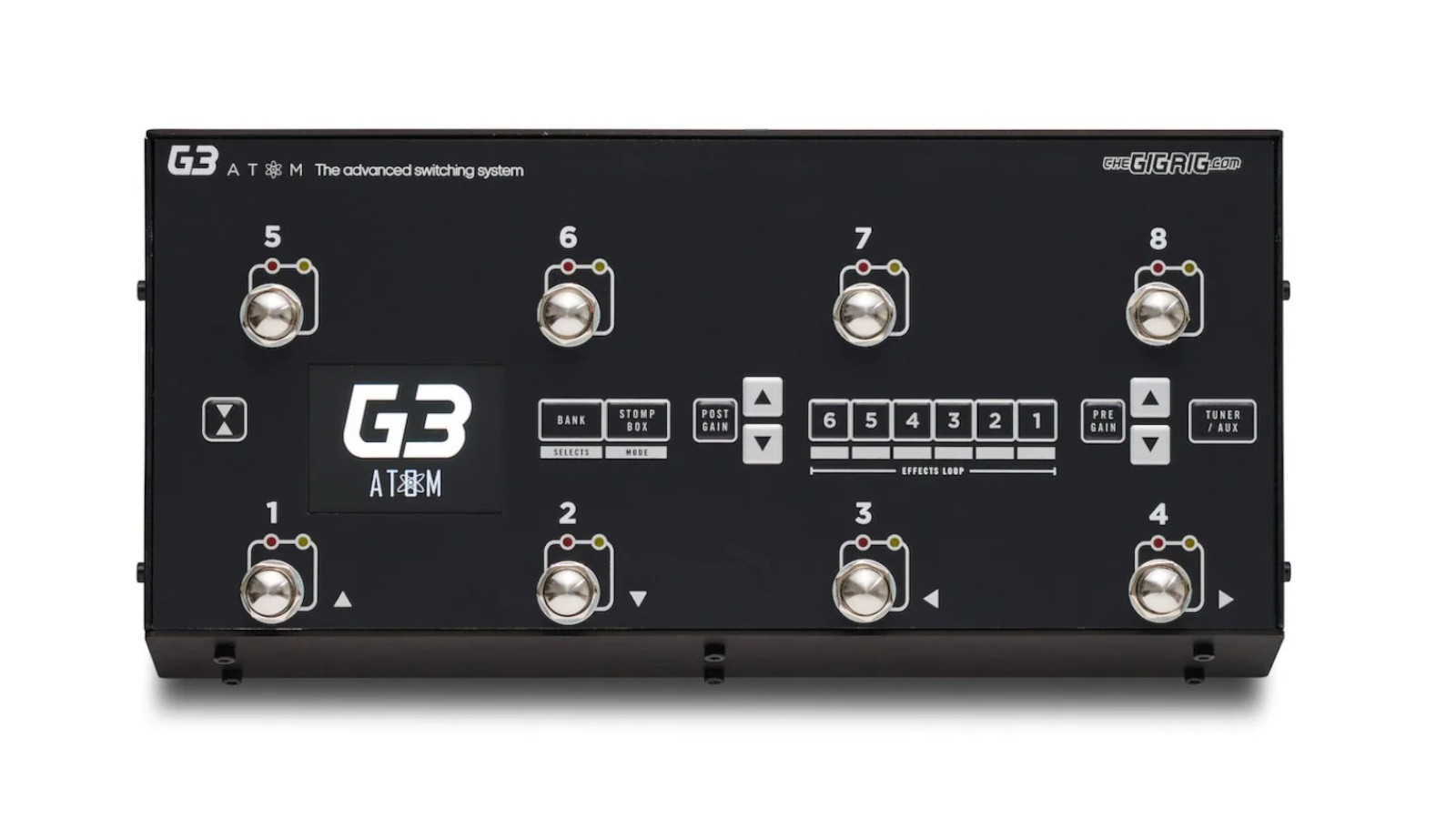
8. Gig-Rig G3 Atom Switching System
Our expert review:
Specifications
Reasons to buy
Reasons to avoid
The Gig Rig’s G3 Atom’s size alone is a game-changer in high-end switching, condensing the formidable routing capabilities of our previously recommended G3 – holding all that programming power in a lightweight, robust, and compact frame. Much like its larger counterpart, navigation through the menu is intuitive, featuring a user-friendly layout free from unnecessary complexity.
Despite its size, the G3 Atom serves as a potent central brain for any pedalboard, packing effortless parallel routing programming with blend controls, ensuring a tasteful balance between two affected signal paths.
Gig Rig's Generator power supply ensures pedal isolation and noise reduction, while gold relays in the effects loop preserve tone integrity and eliminate unwanted noise without compromising on sound quality.
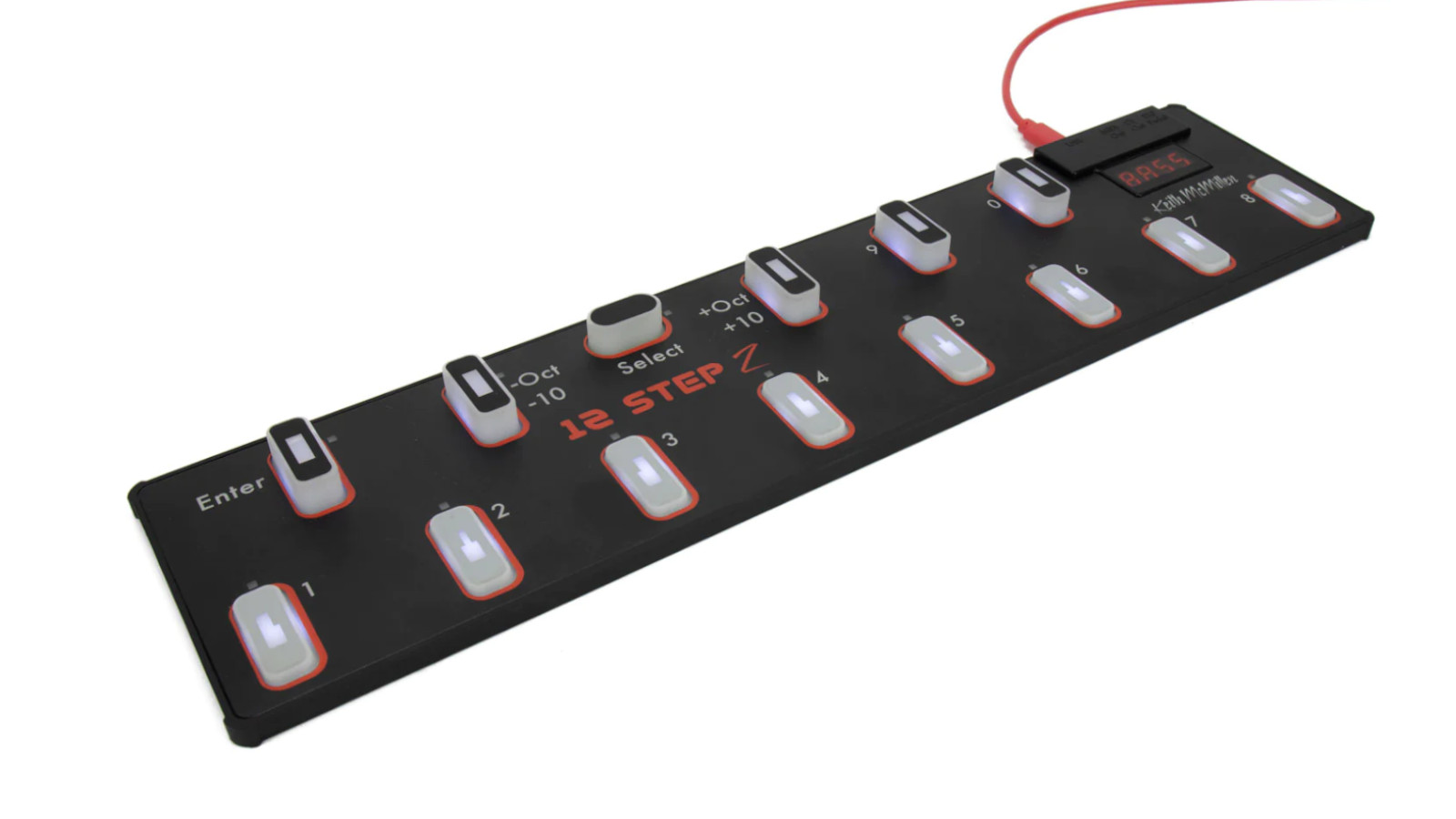
9. Keith McMillen 12 Step USB Midi Floor Controller
Our expert review:
Specifications
Reasons to buy
Reasons to avoid
Tailored to a specialized audience, the 12 Step footswitch reimagines traditional MIDI foot control, serving as a keyboard-mapped controller for triggering single notes and chords. Its pressure-sensitive pads allow users to add drones, choral textures, and shift harmonic centers, offering tonal beds for endless shredding.
The highly programmable 12 Step sends MIDI signals to compatible pedals, providing parameter expression via its pressure-sensitive pads. Compatible with digital set-ups and DAWs, it can integrate live expression with virtual instruments and plugins, as seen and used by guitarist Avi Bornick in John Scofield’s Uberjam Deux band and Munaf Rayani of Explosions In The Sky.
With its PC and Mac software editor, the 12 Step facilitates in-depth MIDI routing, encouraging users to explore the full potential of digital experimental live set-ups.
FAQs
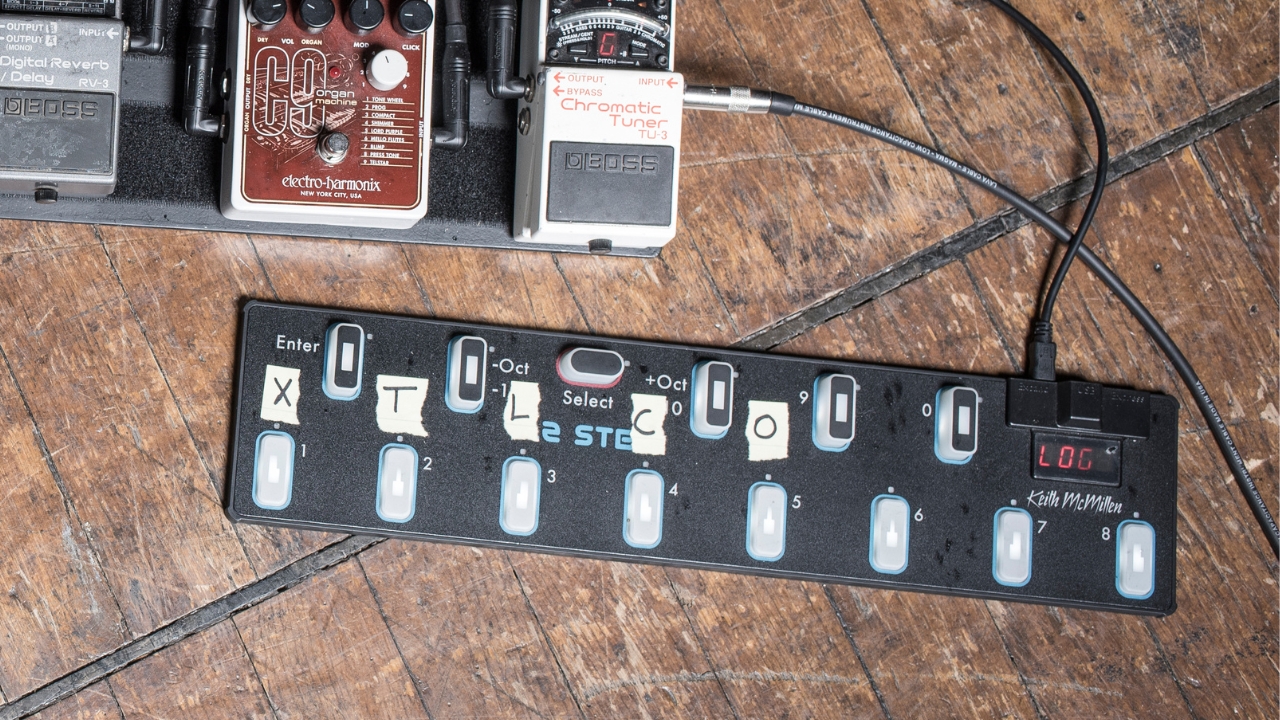
Should I buy a MIDI footswitch controller?
When considering the purchase of a MIDI footswitch controller, there are several factors to keep in mind. Firstly, assess your specific needs and performance requirements such as the size of your pedalboard, the number of pedals you wish to control and the level of customization you desire. Look for controllers that offer sufficient loop capacity and programmability to accommodate your set-up.
If you want to prioritize user-friendly interfaces and intuitive controls then check out controllers from tried and tested brands such as Fender, Electro-Harmonix and Boss. If you are looking to dive deep down the rabbit hole of pro-level back-end programming, then mirror the pro’s choices of Gig Rig and RJM. By considering your personal needs and gauging how technical you want to get, you can land on the perfect switcher for your set-up.
What is a MIDI controller for guitar?
If you're a regular gigging guitarist seeking to streamline your effects management, MIDI-controlled foot switchers can revolutionize the way you interact with your pedalboard, offering efficient and creative routing options. MIDI foot controllers enable you to execute seamless pedal changes, ensuring your performance flows smoothly without any disruptions or missed cues.
As well as effect loop pedal selecting and MIDI parameter control, the benefits of MIDI footswitch controllers include achieving consistent volume level matching between patches, maintaining a clean signal path by only introducing pedals to the circuit when active and moving all your footswitching to a convenient central location on your board.
What does MIDI do for guitar pedals?
If you have a MIDI-equipped guitar pedal, you can use a MIDI switcher to change settings or presets on the pedal that would ordinarily require you to press a switch or turn a knob. It's a super flexible way of speeding up your changes during a live show, leaving you to concentrate more on your actual performance.
MIDI switchers allow you to turn multiple pedals on or off at the same time, which is great for players who want to go from whisper quiet clean guitar to a huge wall of sound without having to tap dance on their 'board. If you have an amp modeler you can even change your amp settings via MIDI, changing channels or just adding an EQ boost to push your guitar through the mix for an important part.
How we test
A MIDI controller is a significant investment so you'll want to be sure you're getting the right one. When we recommend MIDI controllers we're doing it off the back of years and years of using them for live shows, whether that's fully MIDI-enabled rigs or using a switcher to change effects patches.
Like any guitar pedal we test, we'll jump straight into using it alongside our regular pedalboard. For a MIDI controller, this means setting up any MIDI-enabled pedals we have to determine how user-friendly the whole process is. We'll aim to test this alongside the general usability of setting up patches, hooking it up to a DAW, as well as how any software works versus the actual interface on the pedal.
We'll also be looking at the durability of the unit, as a MIDI controller by definition is something used on a gigging pedalboard. It has to be able to put up with the rigors of life on the road, so we'll closely examine the construction of the unit to ensure it feels rugged enough for purpose.
Read more about our rating system, how we choose the gear we feature, and exactly how we test each product.
Related buying guides
You can trust Guitar World
- Keep it sounding good with the best guitar tuners
- Upgrade your modeler with the best impulse responses
- Sound great and save money with the best cheap guitar pedals
- Check out our choice of the best guitar amps
- Add some space with the best reverb pedals
Get The Pick Newsletter
All the latest guitar news, interviews, lessons, reviews, deals and more, direct to your inbox!
Joe is a freelance writer with an affinity for all things noisy, and loves offset Fenders, Stratocasters, and hollowbodies. He plays jazz and improv residencies and is part of UK grunge outfit IOTA. Alongside his playing, Joe harbors an interest in production and sound design, which propeled him into specialized marketing, interviews, and blog content for electronic music outlets and developers like Slate + Ash. When not merging his love for the guitar with music journalism, Joe succumbs to his fuzz-tone addiction and continually expands his collection of music gear.
- Matt McCrackenJunior Deals Writer

